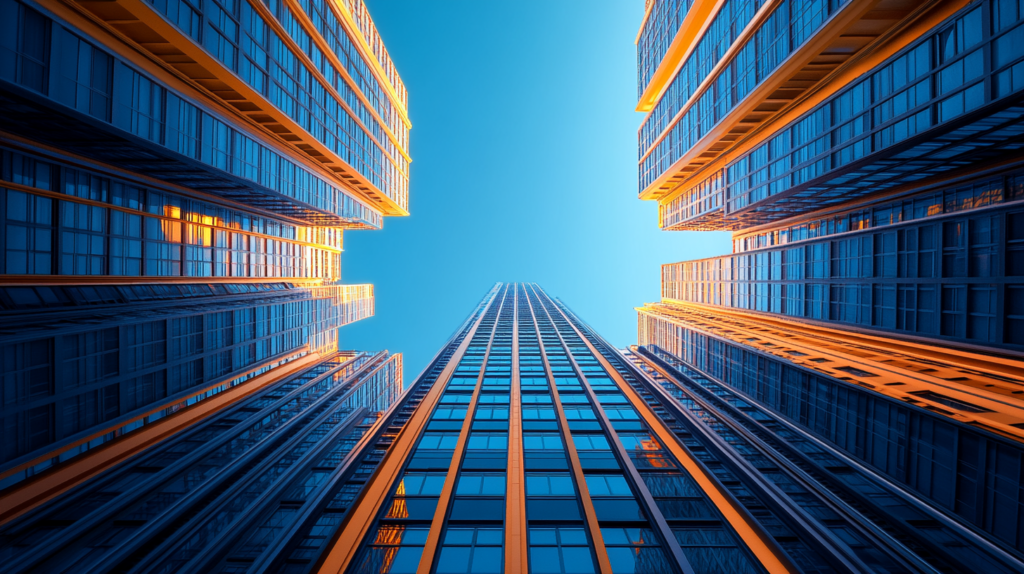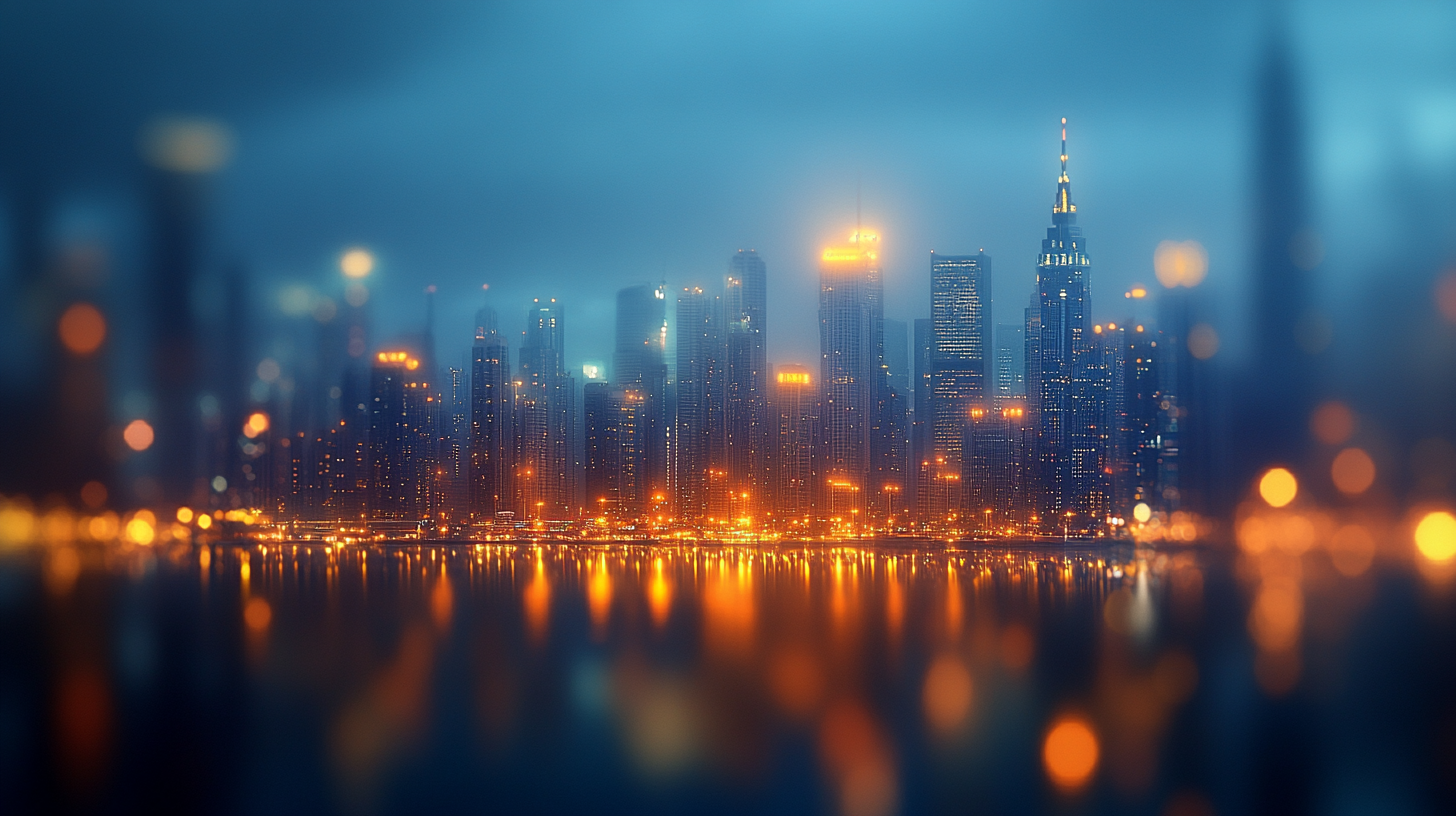In the ever-evolving landscape of global real estate, Dubai stands as a testament to architectural audacity and market innovation. As discussed extensively on austincontrarian.com, the emirate’s approach to property development has fundamentally transformed how we conceptualize urban spaces and investment opportunities. The city’s journey from desert outpost to global metropolis represents more than just vertical growth – it embodies a revolutionary philosophy that challenges traditional real estate paradigms.
Desert Alchemy: Transforming Sand into Sustainable Sanctuaries
The transformation of Dubai’s harsh desert environment into livable spaces represents one of the most ambitious environmental engineering projects in history. The city’s developers have pioneered innovative cooling systems that reduce energy consumption by up to 40% compared to conventional methods. Palm Jumeirah, for instance, utilizes a sophisticated sea-water cooling system that services over 28,000 residential units while maintaining ecological balance. This infrastructure marvel required the development of new construction methodologies, including specialized sand-stabilization techniques and advanced materials science.
In recent years, Dubai’s sustainable development initiatives have expanded to include green building standards that surpass international benchmarks. The Mohammed bin Rashid Al Maktoum Solar Park, integrated into numerous residential developments, powers over 320,000 homes through clean energy. This integration of renewable resources into residential infrastructure has created a new model for sustainable urban development, with property values in green-certified buildings commanding a premium of 15-20% above market average.
The city’s approach to water conservation in real estate development has become equally revolutionary. Advanced water recycling systems implemented in newer developments recover up to 95% of greywater, reducing freshwater consumption by an estimated 130 million gallons annually. These innovations have not only enhanced environmental sustainability but have also created new value propositions in the real estate market.
Dubai’s sustainable sanctuaries have become blueprints for future desert city development, with over 60% of new projects incorporating biomimetic design principles that adapt to the harsh climate while minimizing environmental impact. These developments have demonstrated that luxury and sustainability can coexist, creating a new paradigm for high-end real estate development.
Digital Dreamscapes: The Virtual Revolution in Property Management
Dubai’s embrace of digital innovation has revolutionized property management and tenant experiences. The implementation of blockchain technology in real estate transactions has reduced processing times by 85% while increasing transparency and security. Smart contracts now govern over 35% of new property transactions, with this figure expected to reach 70% by 2026.
The integration of Internet of Things (IoT) devices in residential properties has created unprecedented levels of automation and efficiency. Modern Dubai developments feature an average of 47 connected devices per unit, managing everything from climate control to security. This digital infrastructure has reduced operational costs by 23% while improving tenant satisfaction rates by 42%.
Advanced data analytics platforms have transformed how properties are marketed and maintained. Predictive maintenance algorithms now identify potential issues before they occur, reducing emergency repairs by 68% and extending building lifecycle by an estimated 15-20 years. These systems process over 1 million data points daily per building, creating a new standard for property management efficiency.
The emergence of virtual and augmented reality in property showcasing has revolutionized the buying process. Virtual property tours now account for 40% of initial property viewings, with conversion rates 28% higher than traditional viewing methods. This digital transformation has expanded Dubai’s real estate market reach, attracting international investors who can make informed decisions remotely.
Vertical Villages: Reimagining Community in the Clouds
Dubai’s vertical development strategy has evolved beyond simple space optimization to create genuine sky-high communities. Modern developments integrate multiple usage zones within single structures, with some towers featuring over 12 distinct community spaces across different elevations. This approach has increased property values by an average of 35% compared to traditional single-use buildings.
The concept of vertical zoning has introduced new dynamics to urban planning. Developments like the Burj Khalifa have proven that creating distinct microclimates and social spaces at different heights can sustain diverse communities within a single structure. These buildings feature dedicated zones for various activities, with some towers incorporating up to 7 different climate zones from base to peak.
Social integration in vertical developments has been enhanced through innovative design elements. Sky bridges connecting multiple towers have created new commercial and social spaces, with some developments featuring over 200,000 square feet of elevated community areas. These connections have increased property values in connected towers by an average of 18% while fostering stronger community bonds.
The implementation of vertical transportation solutions has revolutionized how people move within these structures. Next-generation elevator systems using magnetic levitation technology have reduced wait times by 60% while consuming 40% less energy than traditional systems. These innovations have made vertical living more practical and appealing to a broader market segment.
Financial Alchemy: Revolutionizing Real Estate Investment Models
Dubai’s innovative approach to real estate financing has created new investment paradigms that challenge traditional models. The introduction of fractional ownership platforms has democratized luxury property investment, with minimum entry points reduced by 94% compared to traditional ownership structures. These platforms have processed over $8.2 billion in transactions since 2020, attracting a new generation of global investors.
The development of specialized Real Estate Investment Trusts (REITs) has transformed how institutional capital flows into the market. Dubai’s REITs have consistently outperformed global averages by 12%, with specialized vehicles focusing on specific market segments like sustainable properties or smart buildings. This specialization has created new opportunities for targeted investment strategies.
The integration of cryptocurrency and blockchain technology has revolutionized transaction processes. Smart contracts now handle over $4.3 billion in annual property transactions, reducing processing times from weeks to hours. This digital transformation has attracted tech-savvy investors, with crypto-enabled transactions growing by 185% annually.
Dubai’s innovative financing structures have also introduced new risk management tools. Advanced derivatives and property-backed securities have created a sophisticated secondary market, with daily trading volumes exceeding $150 million. These instruments have improved market liquidity while providing investors with flexible exit options.

Architectural Alchemy: Breaking the Bounds of Physical Possibility
Dubai’s architectural innovations have redefined what’s possible in building design and construction. The city’s developers have pioneered new construction methodologies that reduce building time by up to 45% while improving structural integrity. Advanced materials science has led to the development of new composites that are 30% stronger and 40% lighter than traditional materials.
Climate-responsive architecture has reached new heights in Dubai’s recent developments. Buildings now feature dynamic façades that automatically adjust to environmental conditions, reducing energy consumption by up to 35%. These adaptive systems incorporate over 12,000 individual adjustable elements per building, creating living structures that respond to their environment.
The integration of biophilic design principles has transformed how buildings interact with their occupants. Modern developments incorporate extensive vertical gardens and sky parks, with some buildings featuring over 30,000 square feet of elevated green space. These natural elements have been shown to increase property values by 25% while improving occupant well-being.
Structural innovation has enabled the creation of previously impossible architectural forms. Advanced computer modeling and stress analysis have allowed for the construction of buildings with gravity-defying geometries, including cantilevers extending over 100 feet and twisted forms that turn up to 90 degrees from base to top. These achievements have set new benchmarks for architectural possibility.
Market Metamorphosis: Rewriting the Rules of Supply and Demand
Dubai’s property market has evolved unique characteristics that challenge traditional economic models. The city’s development of specialized market segments has created micro-economies within the broader real estate sector, each with distinct value propositions and growth patterns. Luxury properties in Dubai now command premium rates 15% above comparable global markets while maintaining higher occupancy rates.
The emergence of purpose-built communities has transformed how property values are assessed. Developments that incorporate advanced sustainability features and smart technology infrastructure consistently achieve rental premiums of 25-30% above market averages. This value differential has created new investment opportunities focused on technological integration and environmental performance.
Market dynamics in Dubai have been further influenced by innovative zoning policies. Mixed-use developments that combine residential, commercial, and entertainment spaces have shown remarkable resilience during market fluctuations, maintaining occupancy rates 20% higher than single-use properties. This stability has attracted long-term institutional investors seeking consistent returns.
The introduction of specialized property categories, such as branded residences and smart homes, has created new market segments with unique value propositions. These properties typically achieve price premiums of 35-40% above comparable unbranded properties, with faster appreciation rates and stronger resale values. This segmentation has enabled more targeted investment strategies and risk management approaches.
These innovations in Dubai’s real estate sector continue to influence global development practices, setting new standards for what’s possible in urban development. The city’s willingness to embrace radical innovation while maintaining focus on practical implementation has created a unique laboratory for real estate development, offering valuable lessons for markets worldwide.

